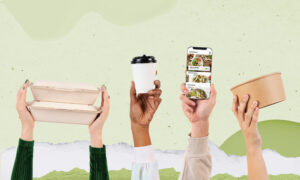According to Future Industry Insights, the food packaging market is being driven by increased demand for packaged foods and stringent government packaging laws. As a result, consumers in developing economies are moving away from unpackaged goods and toward packaged foods. Because of rising health consciousness and understanding of the significance of consuming fresh food, demand for packaged items with a longer shelf life is increasing.
In 2021, the worldwide food packaging industry was valued at roughly US$ 319 billion, up 4.8 percent year on year. By the end of 2032, food packaging sales are expected to grow at a respectable CAGR of 5.3 percent, valuing the industry at US$ 563 billion.
Food packaging sales are predicted to reach US$ 335.9 billion by 2022, thanks to the rising demand for convenience foods. The global packaged and processed food business is predicted to grow greatly in the next years, owing to the convenience and speed with which packed and processed meals may be prepared.
The Most Important Takeaways from the Food Packaging Market
- By 2032, the food packaging market is predicted to have grown by 1.7 times its current size, topping US$ 563 billion.
- The flexible food packaging industry is expected to dominate the market throughout the projected period, based on packaging type.
- Dairy products are predicted to remain the most popular food packaging item, with a 1.7x increase in demand.
- During the projected period, the South Asian food packaging market is expected to account for nearly 26% of the global market share.
“As people work longer hours, their eating habits are changing, which will help the market flourish.” To take advantage of this trend, important businesses must refocus on innovation and rethink food packagtor to keep products fresh for extended periods.” FMI Analyst’s comments
Which region will be the global leader in food packaging?
The plastic and paper sectors, according to FMI, account for the majority of the worldwide food packaging market. Plastic was once thought to be the best material for food packing due to its beneficial properties.
Jars, cartons, bottles, and other plastic packaging types are cost-effective, lightweight, useful, and adaptable. However, as a result of stricter food contact packaging rules in North America and Europe, the use of plastic containers for food storage and packing is reducing.
Meanwhile, paper packaging is increasingly gaining traction in the candy and bakery industries. Consumers are more concerned about using container formats that have a lower environmental impact. As a result, during the next five years, the demand for paper packaging in the food industry is predicted to double.



































